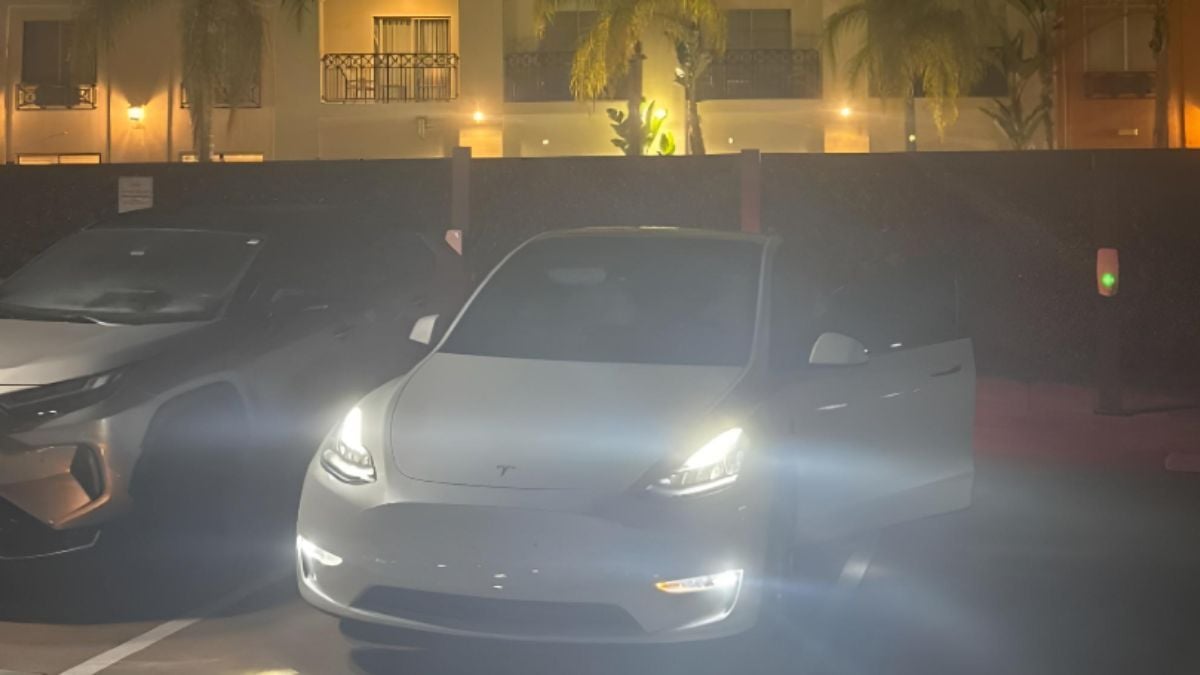The allure of electric vehicle (EV) ownership is undeniable: silent operation, cutting-edge technology, and the promise of significant fuel savings. However, the reality can be more complex, especially for those constantly on the move without consistent access to home charging. This is exemplified by one Tesla Model Y owner who faced a substantial Supercharging bill within just two weeks. Dom Aspeslagh’s experience, shared in the “Tesla Owners of Phoenix” Facebook group, has sparked a broader conversation about the practicality of EVs for certain lifestyles.
Dom’s situation underscores the critical role of home charging in realizing the economic benefits of EV ownership. His reliance on Superchargers while towing for his jetski rental business resulted in unexpected costs, leading him to question the value proposition of EVs. This article delves into the factors contributing to Dom’s high charging expenses, examines the importance of home charging, and provides insights for prospective EV buyers to make informed decisions.
The High Cost of Supercharging Without Home Access
Supercharging rates can be quite variable, with states like Arizona and California often seeing higher prices per kilowatt-hour (kWh). For a Tesla Model Y owner towing heavy equipment, especially in hot weather, the impact on range and battery conditioning can significantly increase charging costs.
Vlad Alt, a commenter on the Facebook post, illustrated this point with a cost breakdown. He noted that without home charging, the cost per kWh is substantially higher, making the “gas equivalent” price much less appealing. Vlad emphasizes that home charging unlocks the true savings of EV ownership.
“It’s simple math. If you didn’t compare before buying, that’s on you. … Since you don’t have a home charger, paying maybe $.45/kw, your gas equivalent is about $4.04/gl.”
This highlights that relying solely on Superchargers can diminish, or even negate, the economic advantages of driving an EV, particularly when compared to gasoline vehicles. It serves as a reminder that EVs are most advantageous when integrated with a home-based charging infrastructure.
EV Suitability and Driving Habits
Steve Donaldson, another commenter, offered a perspective on matching EV usage with lifestyle. He pointed out that EVs excel in consistent and predictable routines where daily home charging is feasible. However, factors such as towing and frequent long drives can quickly alter this equation.
“Don’t blame the vehicle, look at what you are using an EV to accomplish. I drive 80–90 miles a day. Home charging is amazing. Charge your car every day. ABC.”
Dom’s business requirements, involving regular towing and short turnaround times, likely contributed to the discrepancy in his experience. The suitability of an EV depends significantly on aligning driving habits and charging opportunities.
Efficiency and Real-World Costs
Summit Point, another commenter, focused on energy efficiency and its impact on overall costs. He calculated that a high Supercharging bill implies significant energy consumption, especially when factoring in towing and other energy-draining activities.
“Assuming CA rate of $0.50 per kWh. $700 equated to 1400kWh. At an average of 3 miles/kWh —> 4200 miles in 2 weeks, 2 miles/kWh —> 2800 miles in 2 weeks, 1 mile/kWh —> 1400 miles in 2 weeks compensated for towing. If you drive less than 700 miles a week, something is not adding up.”
Summit’s analysis underscores the critical role of efficiency in determining real-world costs. Towing reduces energy efficiency, leading to lower miles per kWh, particularly in hot climates. Driving style, weather conditions, and terrain also affect range performance.
The “Triple Hit” to EV Efficiency
Dom’s use case—towing a jet ski in the Arizona heat—represents a worst-case scenario for EV efficiency. The combination of aerodynamic drag, battery cooling demands in high temperatures, and added weight can drastically reduce range.
This situation isn’t unique to Tesla; most EVs experience similar efficiency losses under heavy demand. It reveals the limitations of advertised range claims, especially when the vehicle is subjected to strenuous conditions. While EVs perform well in routine, stop-and-go city driving, commercial usage can expose weaknesses in range and charging infrastructure.
EVs Still Make Sense with the Right Setup
Despite Dom’s experience, EVs remain a valuable investment when expectations are aligned with actual usage. Home charging overnight significantly reduces the cost per mile, making EV ownership economically advantageous. However, reliance on Superchargers and demanding driving habits can lead to disappointment.
Ultimately, the issue may not be solely about range or charging costs, but a combination of factors, including driving style, charging location pricing, and efficiency losses. These factors, when combined, create a perfect storm that inflates operating costs.
Key Takeaways for EV Shoppers and Owners
- Home charging is the foundation of EV savings: Without it, public charging can cost as much or more than gas.
- Know your driving profile: High-mileage, towing-heavy, or commercial-style use cases will skew efficiency metrics and increase operating costs.
- Check your electricity rate: Peak vs. off-peak pricing can drastically shift your cost-per-mile calculation.
- Range loss under load is normal: EVs lose significant range when towing or driving in extreme conditions. Plan accordingly.
- Positive EV experiences rely on setup: Well-matched infrastructure and habits can make all the difference.
Final Thoughts
Dom’s experience serves as a crucial reminder of the significance of home charging in EV ownership. His unexpected Supercharging bill highlights the importance of aligning expectations with actual usage patterns and charging infrastructure.
While EVs offer numerous advantages, the economic benefits are contingent upon specific conditions. For those with access to home charging and predictable driving routines, EVs can be transformative. However, those relying on public charging, especially under demanding conditions, may find that the numbers don’t add up. The key lies in ensuring that every piece of the equation aligns with individual needs and lifestyles.

Leave a Reply